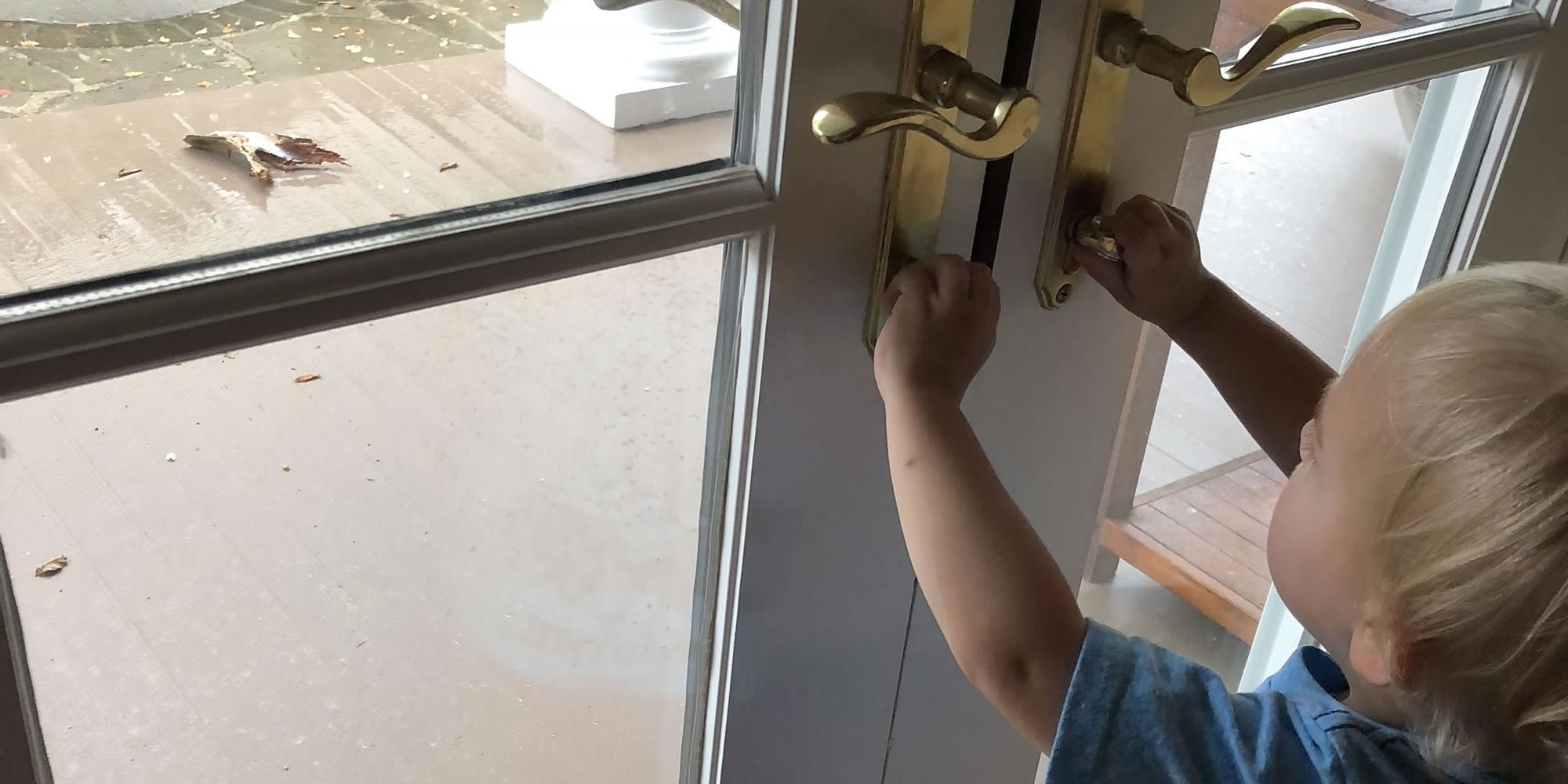Young children are naturally attracted to things that open and close; and this is especially true when it comes to doors, doorknobs and handles. When this profound interest happens, it will likely continue until the child’s need is satisfied.
A Doorknob Offers Hands-on Learning and Fosters Development
The knob in his hand is yet another material that is helping him to develop. Learning how it works serves his development, i.e., building his confidence, coordination, concentration and cognitive skills. Also, it helps him understand the idea of separation—something can disappear and then reappear.
The Key? Acknowledge His Interest
How we process this interest is the key to the door. Instead of trying to distract him or tell him why he shouldn’t “play” with the door, step closer, bend down beside him and acknowledge his interest in learning how to open and close the door. Look at him in the eye and say, “I am going to show you how to open and close the door.” Once the child sees and hears your willingness to ‘help him help himself’, you will have his attention and he will feel respected.
SHOW — Slow Hands Omit Words — How to Open the Door
Ask the child to watch you first and reassure him that he will have a turn next. Silently and using exaggerated movements, begin the lesson:
1. Once you are a forearm’s length away from the door, extend the hand closest to the hinges to create a clear sightline for the child to see your movements.
2. Grasp and hold the doorknob
3. Turn the doorknob slowly until the catch is all the way in
4. Open the door
5. With the knob still turned and the catch in, take the knob on the other side of the door with the other hand
6. Turn that knob so the catch continues to stay in the slot
7. Move past the door, through the doorway and close the door carefully and quietly
8. Release the knob slowly until you both hear the “click”
9. Give the knob a little pull to see if the catch is caught
10.Invite the child to take a turn
A Readiness for Additional Opening and Closing Activities
A fascination with how doors work can indicate a readiness for other activities involving opening and closing. Offer the child a basket with small containers and lids to remove and replace, or create a safe cabinet in the kitchen with pots, pans with lids to fit. Practical life activities, such as these, support the child’s natural development and help him to become a disciplined, ordered, caring and independent person.
“When one door closes, another door opens; but we often look so long and so regretfully upon the closed door that we do not see the one which has opened for us. ” Alexander Graham Bell, Montessori supporter and founder of the Montessori Educational Association in 1913 .

